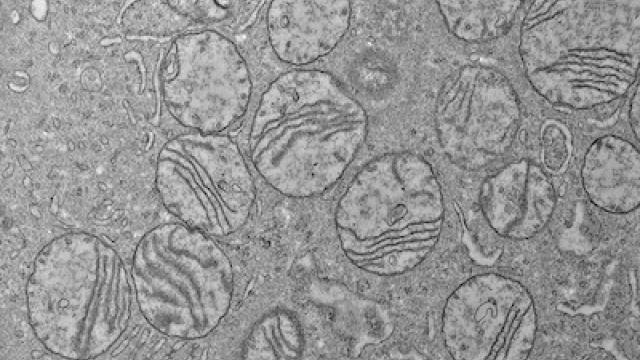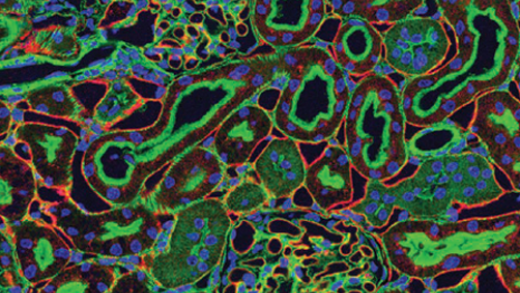
W. Marston Linehan, M.D.
- Center for Cancer Research
- National Cancer Institute
- Building 10, Room 1-5940
- Bethesda, MD 20892-1107
- 240-858-3700
- linehanm@mail.nih.gov
RESEARCH SUMMARY
Dr. Linehan pioneered the study of the genetic basis of kidney cancer. His team identified the genes for the common forms of kidney cancer and described the pathways of these kidney cancer genes. His recent studies targeting the metabolic basis of kidney cancer have resulted in the regression of metastatic cancer in patients with type 1 and type 2 papillary kidney cancer. As Chief, Dr. Linehan oversees the Branch’s clinical/translational research program, which emphasizes new approaches to the therapies of genitourinary cancers, diagnostic and prognostic evaluation of solid GU tumors, and the development of innovative surgical and adjunctive approaches to the treatment of patients with primary and metastatic urologic cancer.
Areas of Expertise
Information for Patients
Learn more about our clinical trials and the highly specialized care teams that lead them.

W. Marston Linehan, M.D.
Clinical Trials
Research
Molecular Genetic Analysis of Genetic Events Associated With Initiation and Progression of Urologic Malignancies
Characterization of the VHL Suppressor Gene Product
The VHL tumor suppressor gene is the gene for both von Hippel-Lindau disease as well as sporadic, clear-cell renal carcinoma. Germline mutations in the VHL gene predispose individuals to a variety of tumors, including renal carcinoma, CNS hemangioblastoma, islet cell tumors of the pancreas, and pheochromocytoma.
The cellular transcription factor Elongin (SIII) has been identified as a functional target of the VHL protein. The VHL protein has been shown to bind tightly and specifically to the Elongin B and C subunits and to inhibit Elongin (SIII) transcriptional activity in vitro. The VHL protein is found both in the nucleus and in the cytosol of transiently transfected cells. There is a tightly regulated, cell density-dependent transport of VHL into and/or out of the nucleus. A putative nuclear localization signal, a nuclear export signal, and a cytoplasmic retention locus have been identified in the VHL protein. These findings provide the initial indication of a novel cell density-dependent pathway that is responsible for the regulation of VHL cellular localization.
In order to further study the function of the VHL gene, additional studies of VHL-associated proteins have been carried out. Recently, Hs-CUL-2, a member of the recently identified multigene family, the cullins, has been shown to specifically associate with the trimeric pVHL-elongin B-C (VBC) complex in vitro and in vivo. Nearly 70 percent of naturally occurring cancer-predisposing mutations of VHL disrupt this interaction. Immunofluorescence studies show Hs-CUL-2 to be a cytosolic protein that can be translocated to the nucleus by pVHL. Hs-CUL-2 may be required for VHL function and, therefore, may be a candidate human tumor suppressor gene.
We have recently developed an improved method of detecting germline mutations in the von Hippel-Lindau disease tumor suppressor gene. We currently can detect mutations in a high percentage of kindreds with this hereditary cancer syndrome (nearly 100 percent). We have also recently identified a new phenotype associated with complete deletion of the VHL gene and are studying the somatic events associated with the development of cancer in this syndrome. We hope that understanding the molecular mechanism leading to cancer will lead to the development of new strategies for early detection, prevention, and treatment.
Characterization of the Hereditary Papillary Renal Cell Carcinoma Gene
A new hereditary cancer syndrome, hereditary papillary renal cell carcinoma (HPRC), has been described. Affected individuals with this hereditary form of renal cell carcinoma are at risk of developing multifocal, bilateral hereditary papillary renal cell carcinoma. Families with HPRC have been evaluated and linkage analysis has localized the HPRC to a locus on chromosome 7. The c-Met oncogene has been determined to be the HPRC gene. We have detected germline and somatic mutations in the tyrosine kinase domain of the Met proto-oncogene in papillary renal carcinomas and developed a strategy for predictive testing in this hereditary cancer syndrome. We have characterized the nonrandom duplication of the chromosome bearing the mutated Met in HPRC and demonstrated that this implicates this event in tumorigenesis.
Molecular Genetic Events Associated with Initiation and Progression of Prostate Cancer
The molecular genetic events associated with the initiation and progression of prostate cancer are poorly understood. Using a novel technique to microdissect tissue under direct microscopic visualization, pure populations of prostate carcinoma have been procured from prostate specimens. This microdissection has allowed the accurate examination of both DNA content and RNA expression in prostate carcinoma. Loss of heterozygosity at a locus on chromosome 8 in a high percentage of tumors from patients with prostate carcinoma has been detected and the area of minimal deletion on chromosome 8p12-21 determined. The identical genetic loss has been shown to be associated with prostate intraepithelial neoplasia (PIN), a precursor lesion in prostate cancer.
In collaboration with scientists in the Laboratory of Pathology, a technique for recovering and analyzing RNA from microdissected prostate cancer and by differential gene expression analysis has been developed, and a novel zinc finger gene upregulated in prostate cancer has been identified. cDNA libraries have been developed from normal, low-grade PIN, high-grade PIN, and prostate cancer. These libraries will be used in the microarray analysis to evaluate differentially expressed genes involved in initiation and progression of prostate cancer.
Publications
- Bibliography Link
- View Dr. Linehan's PubMed Summary.
Identification of the von Hippel-Lindau disease tumor suppressor gene
The Warburg effect in hominis: isotope-resolved metabolism in ccRCC
The Metabolic Basis of Kidney Cancer
A Phase II Trial of Vandetanib in Children and Adults with Succinate Dehydrogenase-Deficient Gastrointestinal Stromal Tumor
Growth Rates of Genetically Defined Renal Tumors: Implications for Active Surveillance and Intervention
Biography

W. Marston Linehan, M.D.
W. Marston Linehan, M.D. is Chief of Urologic Surgery and the Urologic Oncology Branch as well as Acting Chief of the Surgical Oncology Program, Center for Cancer Research, at the National Cancer Institute, National Institutes of Health, Bethesda, Maryland. He has had a long standing interest in identification of the genetic basis of cancer of the kidney. By studying patients and families with kidney cancer, he and his colleagues identified the VHL gene (von Hippel-Lindau and clear cell renal carcinoma), the gene for Hereditary Papillary Renal Carcinoma (MET oncogene, type I papillary renal carcinoma) the FLCN gene (Birt Hogg Dubé syndrome, chromophobe renal carcinoma), the gene for TFE3 kidney cancer and described the germline fumarate hydratase and succinate dehydrogenase B/C/D mutations in the North American families with hereditary leiomyomatosis renal cell carcinoma (HLRCC) and SDH-RCC and described five new diseases. This work has provided the basis for the development of new therapeutic strategies for the different types of kidney cancer based on understanding the molecular pathway of the specific cancer genes associated with the different types of kidney cancer. He and his colleagues have defined the methods for clinical management of kidney cancer associated with the hereditary forms of kidney cancer, von Hippel Lindau, Hereditary Papillary Renal Carcinoma and Birt Hogg Dubé syndrome and Hereditary Leiomyomatosis Renal Cell Carcinoma and Succinate Dehydrogenase Renal Cell Carcinoma.
Job Vacancies
We have no open positions in our group at this time, please check back later.
To see all available positions at CCR, take a look at our Careers page. You can also subscribe to receive CCR's latest job and training opportunities in your inbox.










